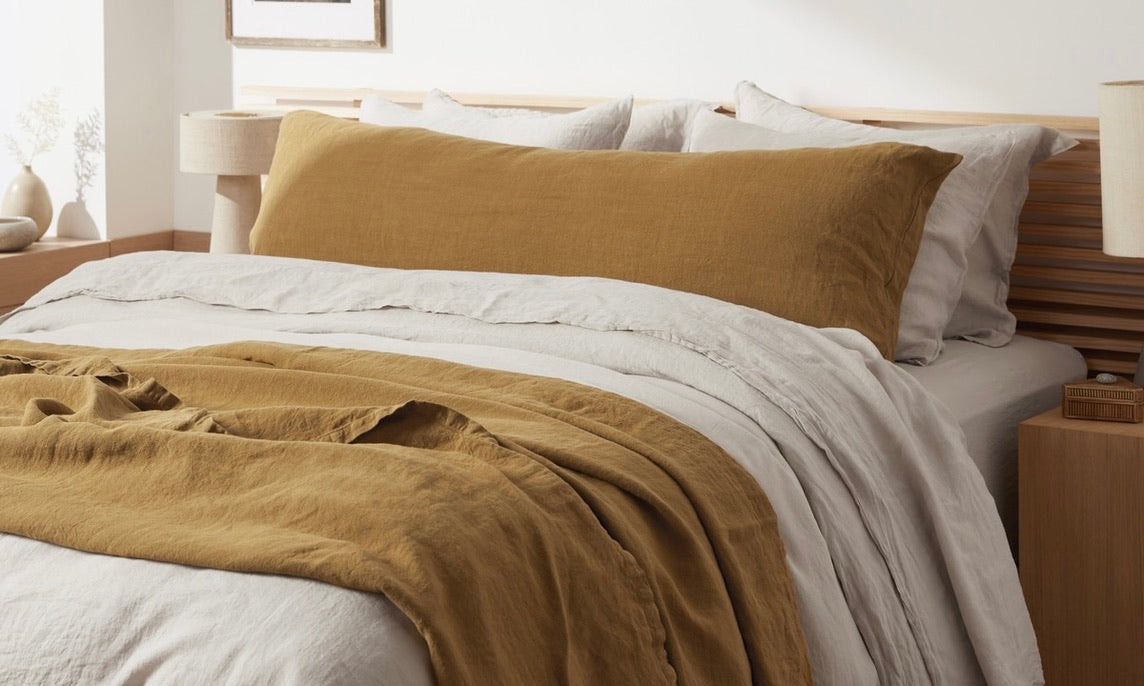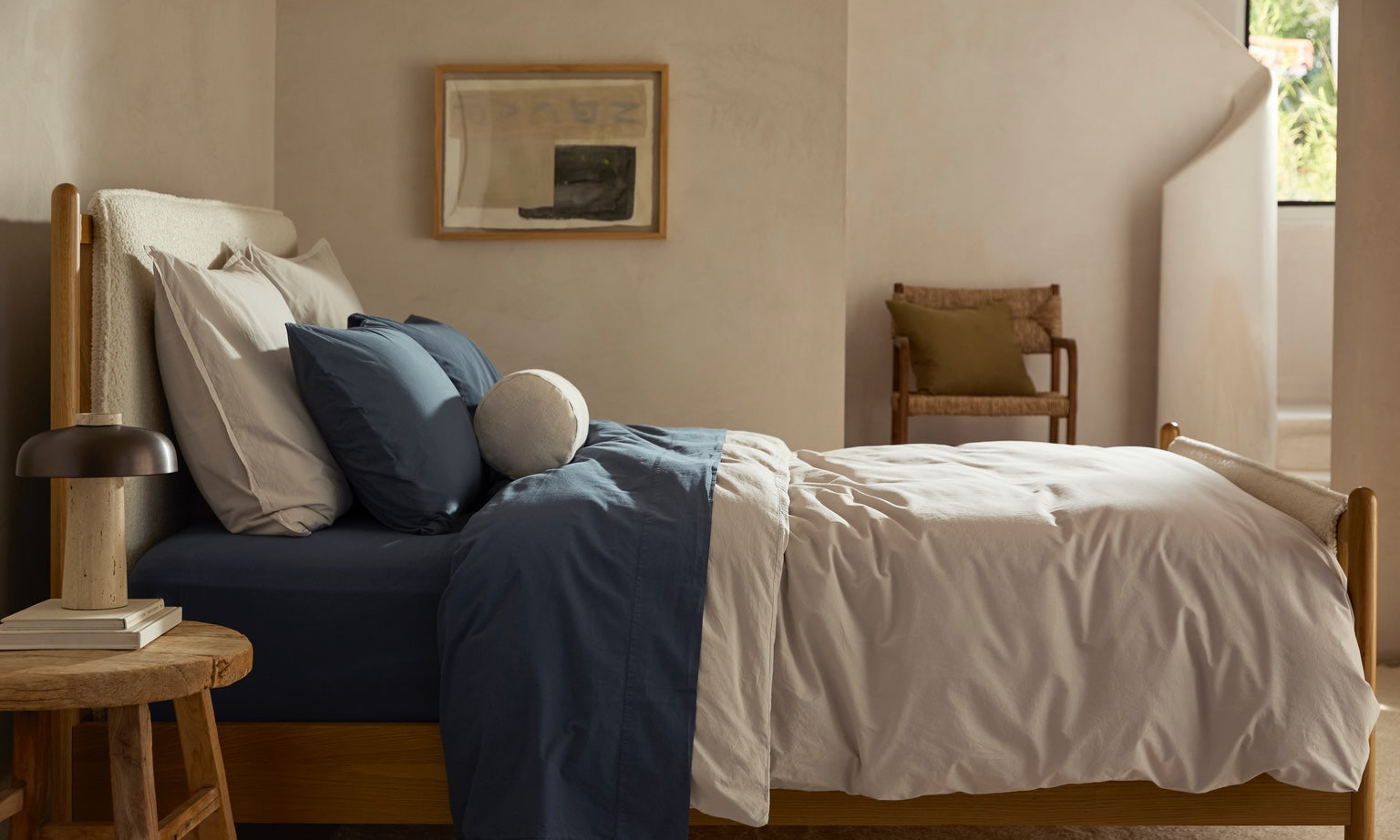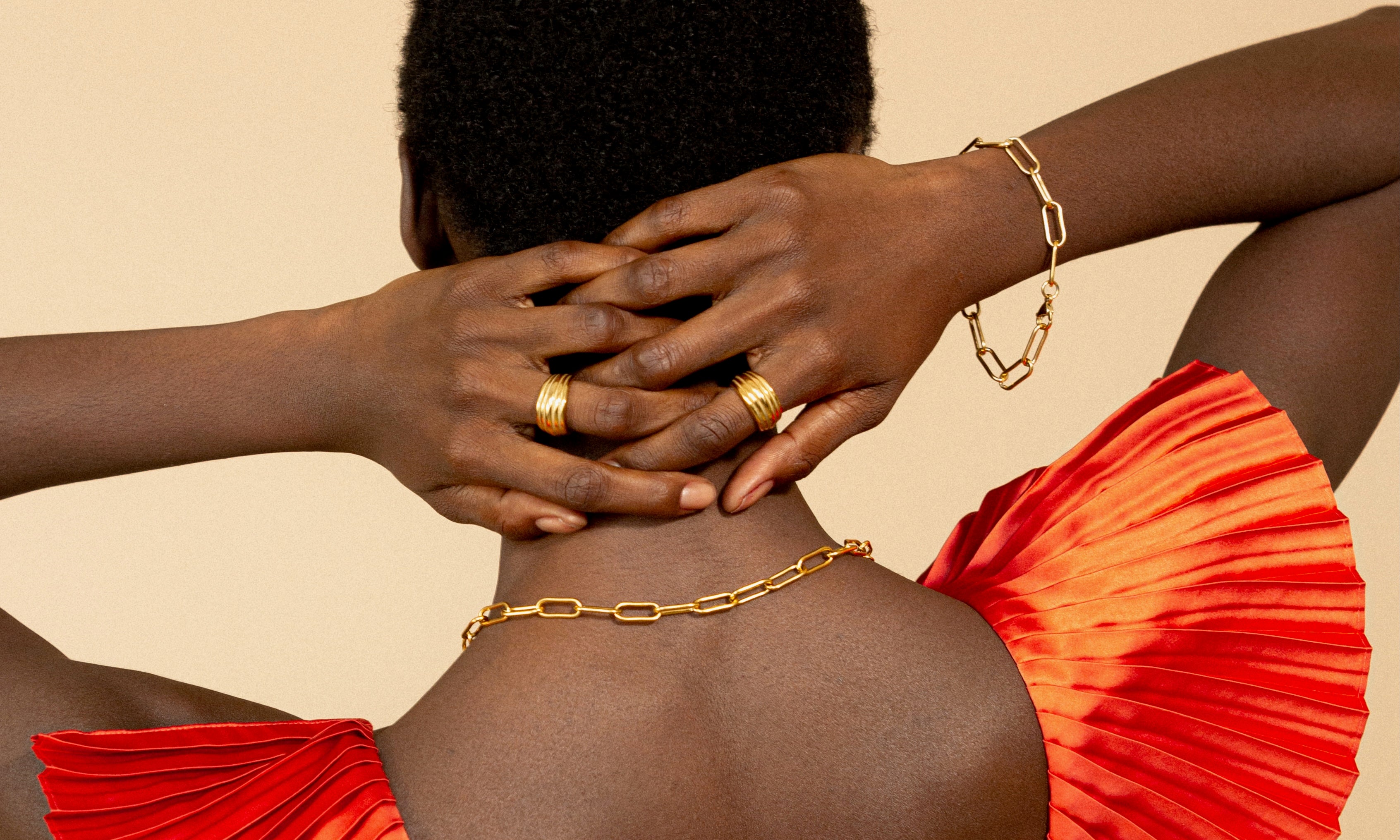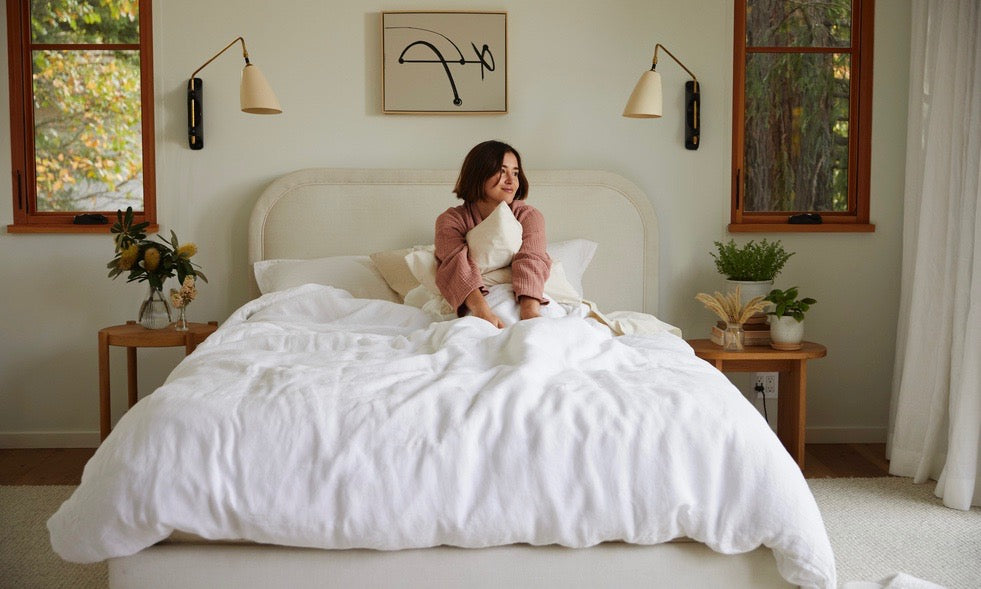
Guide to Quilts, Blankets and Coverlets: A Modern Take on Traditional Covers
We outline the function and styling of some of our most favorite essentials.
Imagine you’re curling up in bed about to open a new book. How do you get cozy? Do you pull up a fluffy blanket? What about that warm quilt that reminds you of your childhood home? Do you rely solely on your down comforter or duvet?
The truth is that every home store is filled with options for covers and bed toppers, whether it’s quilts, blankets, coverlets and even comforters and duvets. They’re all extremely similar, but rest assured, they’re not the same. So how do you choose one over the other?
The argument of quilt vs. blanket vs. coverlet is all up to personal preference. Each type of cover is a functional accent piece that brings its own unique style. They are meant to be seen and can change the feeling of a bedroom. Throw one over the back of an armchair to tie in the colors of an area rug or fold one up at the end of your bed for a modern pop of color. Let’s dive in.
What is a blanket?
Everyone who’s ever curled up on the couch with a good movie probably knows that blankets are a cozy layering option. They can be used on top of a comforter or duvet for extra warmth; they can be used on their own; they can even be folded up on the bottom of a bed or hung over the back of a couch to add some style to a room — but what really is a blanket?
A blanket is a catch-all term for a single-layer, rectangular piece of fabric with bound edges that’s used as a cover for warmth. They come in every fabric under the sun. You may find wool blankets, linen blankets, fleece blankets, cashmere blankets and a blanket in just about any other fabric you can think of. They come in varying sizes and varying levels of thickness and warmth.
What is a quilt?
When most people hear the word quilt, they think of a homemade type of bed covering passed down from a grandmother or other older relative. Quilts conjure images of warmth, love, friendship and tradition. They’re often viewed as heirlooms, and it’s true, quilting is an artform with a rich history. It’s also a popular craft, but despite the nostalgia, quilts are anything but old fashioned.
At its heart, a quilt is a type of bedding consisting of three layers. One layer of batting is sandwiched between two layers of woven fabric, with all layers all stitched together. The name is derived from the process in which they’re made. Quilts are crafted by quilting. That’s the process of sewing the three layers together. They are typically thicker than blankets, and can be used as a layer or on their own.
Traditionally, the top layer of a quilt is decorative — whether it’s because of the stitching or the pattern of the fabric — but modern quilts can provide a minimalistic, streamlined look unlike the patched and re-patched quilts of yore. For example, Parachute’s Ribbed Quilt comes in a neutral tone, but the corduroy fabric adds both texture and a sense of 1970’s nostalgia to your bedroom decor. It makes a subtle statement. Other quilts can be bolder, featuring everything from bright geometric patterns to entire landscapes with wildlife.
What is a coverlet?
A coverlet can act like a blanket, but it’s more akin to a shorter type of bedspread. Unlike quilts and blankets, this type of bedding isn’t always a bed topper and isn’t used on its own. It can either be used decoratively at the foot of your bed or you can place it between your sheet and comforter for an added layer of warmth. The main takeaway is that coverlets are typically lightweight, smaller than other cover options and don’t hang all the way to the floor like a bedspread.
This is where it gets a little confusing: a modern coverlet can technically be a quilt if the fabric is quilted, but quilts are generally heavier. Even if a coverlet is quilted, it typically won’t have the layer of batting that makes a quilt a quilt.
Learn more about coverlets in our article: What Is a Coverlet? What to Know About This Traditional Bed Cover.
How are they different from comforters and duvets?
Blankets, quilts and coverlets are similar enough without throwing in the idea of comforters and duvets. This brings up a lot of questions, such as what’s the difference between a quilt vs. comforter or a comforter vs. blanket? What about a duvet vs. quilt? It can get a little confusing, but it’s best to look at the cover’s purpose.
Duvets and comforters are heavier than blankets, quilts and coverlets because they’re meant to be used by themselves. Though you can technically fold a quilt into your sheets and use it like a comforter (which some people do in the summer), it’s generally not as warm or heavy-duty. Coverlets don’t even scratch the surface. They’re typically not big or thick enough to be used as anything other than a layer. Though blankets vary in size (some of which are smaller than duvets and some of which are larger), they are also quite lightweight in comparison.
Standard Quilt and Blanket Sizes
Most quilt and blanket sizes are based on bed sizes. Blanket dimensions are more or less standardized in the U.S. For example, someone with a full size bed would purchase a full size blanket, but what size is a full size blanket? It has around the same dimensions as a full size comforter or duvet.
Overall, blankets and quilts have more size options than comforters and duvets, especially when you start getting into baby blanket sizes. The standard blanket sizes are as follows:
Lovey: 12” x 12”
Baby: 14” x 16”
Cradle: 14” x 30”
Premie: 18” x 24”
Stroller: 22”-30” x 30” to 36”
Lapghan: 36” x 48”
Receiving: 40” by 40”
Crib: 45” x 60”
Throw: 50” x 65”
Afghan: 50” x 65” (though they can vary)
Twin: 65” x 90”
Double (a.k.a full size blanket dimensions): 85” x 90”
Queen: 90” x 90” to 100”
King: 108” x 90” to 100”
Lovey, baby, cradle, premie, stroller, crib and receiving blankets or quilts are all made for infants and toddlers. Some are built for comfort, like a security blanket, and others function as an added layer of warmth or are used for swaddling, changing and burping. These are used at various stages of a child’s development, from swaddling in the neonatal unit to inside strollers and carseats.
Lapghan, Afghan and throw blankets are best suited for larger children, teens and adults, but they’re smaller than blankets that go along with bed sizes. These are what you wear to get cozy on a couch or in a chair, and they’re not typically long enough to sleep.
Throw blankets and quilts are generally decorative and often used as a functional accent piece on the edge of a sofa or bed. Afghans are what the name sounds like — they’re blankets originating from Afghanistan. Like throws, these are traditionally decorative, but today, the term is often used to describe any knitted or crocheted blanket. Lapghans are a smaller type of Afghan and, as it sounds, they’re used to cover a lap (think: someone in a wheelchair or getting cozy on an armchair).
If you’d like to use a blanket or quilt for sleeping, you should purchase a bed-sized blanket. For example, full size blanket dimensions work best with a full-size bed. Remember: coverlets also come in bed-sizes, but they’re slightly smaller than blankets, quilts, duvets and comforters.
What are quilts, blankets and coverlets made from?
Quilts, blankets and coverlets come in a variety of different materials, from quilts with wool batting to gorgeous silk throws. The fabric is what determines how you’ll wash and care for your bedding. You wouldn’t throw a cashmere blanket in with the rest of your laundry, but a fleece blanket would be just fine.
At Parachute, quilts and coverlets are crafted from cotton or a cotton-linen blend, which makes them easy to care for. Parachute’s classic quilts have a 100% linen front and a 100% percale back, which gives them a breathable, lived-in feel and a heritage look. We also have a range of baby blankets in cashmere and cotton. You can find the perfect level of warmth by using this guide to quilts.
How to Style Your Quilt, Blanket or Coverlet
Quilts, blankets and coverlets aren’t just functional; they can really refresh the style of a bedroom in an instant. The classic look is to place the covers over your duvet and fold them at the end of your bed, which can add that little something extra in the form of texture. A brightly-colored throw or a patterned quilt can make an accent color pop. For a tailored look, you can tuck the edges of your covers into your bed. For a more relaxed look, you can hang past your mattress. In warmer months, you may want to swap your duvet out altogether and tuck your quilt directly into a top sheet.
Beyond that, you don’t have to use your quilt or blanket on your bed at all. You can use it anywhere in your home. Drape it over a couch to spice up the look of your living room or carefully place it over an accent chair in the corner of a home office to give your workspace cozier vibes.
The Bottom Line
Whether you choose a quilt, blanket or coverlet depends on what you want to get out of a cover: the style, size and level of warmth. While quilts and blankets can be carefully-curated decorative pieces, you may enjoy the functionality of a coverlet tucked inside your bed. Covers don’t need to be a show piece, though they’re a simple way to pull together a room.
Parachute has a myriad of options that will suit any home’s aesthetic. You can read more about styling your quilts and blankets or browse Parachute’s line to find your perfect match.
For more help picking the best bedding for you, read on:
Mattress & Bedding Protector Guide
How to Choose the Right Pillow
Best Organic Sheets: What to Look For
Best Organic Pillowcases & Shams: What to Look For
How to Choose the Right Bed Sheets
Side Sleeping: How to Best Sleep on Your Side
Everything to Know About Duvets & Duvet Covers
Pillowcases & Shams: Everything to Know









